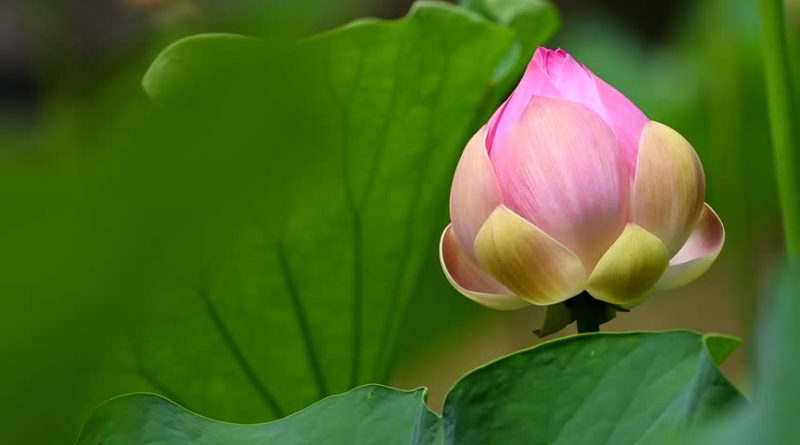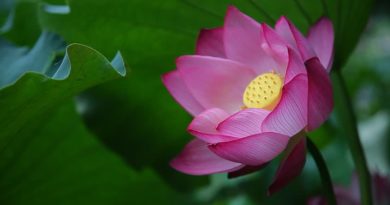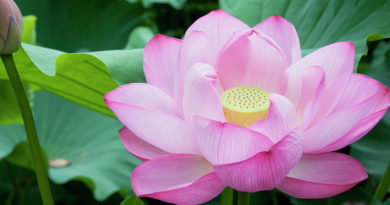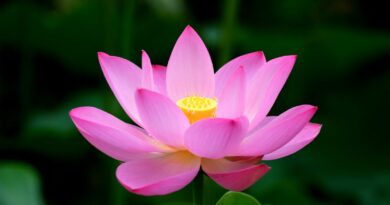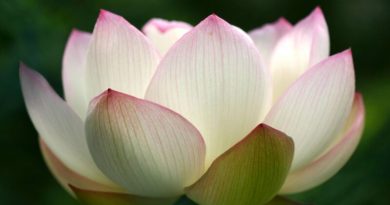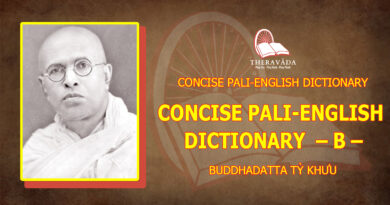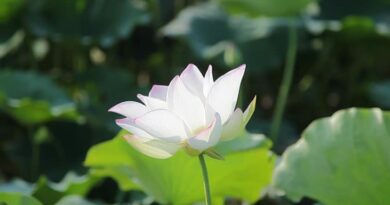DHAMMA PADETHA – 22. INSIGHT CAN BE GAINED ONLY BY OVERCOMING VEDANAS
DHAMMA PADETHA – INSIGHT CAN BE GAINED ONLY BY OVERCOMING VEDANAS
Nowadays, the practice of vipassana meditation has flourished. Those who are knowledgeable believe that vipassana meditation is dependable and are practising it. Those who do not have the opportunity yet are trying to study the method of practising vipassana meditation.
Learned people from various countries of the world are trying to make a research as to whether a yogi can find out scientifically about the true nature of the physical body by practising vipassana meditation. If one practises vipassana meditation correctly, one will definitely find the true nature of the physical body scientifically for oneself.
Vipassana meditation is practised to find out scientifically the true nature of the physical body by intuitive knowledge. Lord Buddha himself had found it through his supreme knowledge and had expounded the dhamma. Because Lord Buddhas’ disciples have practised according to the method given, generation after generation have found the reality of the true nature of the physical body scientifically and have attained true happiness.
By practising vipassana meditation systematically with the correct method one will know the true nature of the physical body by insight knowledge and will experience physical and mental sensations.
There are three types of sensations
(1) unpleasant sensation — dukkha vedana (2) pleasant sensation — sukha vedana
(3) neither unpleasant nor pleasant sensation—neutral (upekkha) vedana.
According to order of priority in Lord Buddha’s preachings (desana) sukha vedana comes first. But when practising vipassana meditation we will know that dukkha vedana comes first.
Only by overcoming these three vedanas by being mindful, can we attain nibbana which we have aspired for.
Of the three vedanas
(1) unpleasant sensation — dukkha vedana, we must overcome as though we pull out the arrow or the thorn.
(2) pleasant sensation — sukha vedana, we must meditate until we realize that it is dukkha.
(3) neutral sensation — upekkha vedana must be contemplated as anicca.
That is how the Lord Buddha had instructed.
(1) Unpleasant sensation (dukkha vedana) must be overcome as though pulling out an arrow or a thorn means:
Those who work in rural areas, sometimes, have their feet or palms pierced by thorns, and if they continue working without pulling out the thorns, work will not progress. Time will be wasted and they will become exhausted.
Just as you pull out the thorn in time, the work is done in time and you are happy.
If yogis who are practising meditation do not try to overcome the aches and pains (unpleasant sensations) etc. as they arise, but keep noting the inhaling and exhaling of the breath or the rising and falling movement of the abdomen, then they will not achieve calmness of the mind or concentration (samadhi) and might keep wandering.
Because the aches and painful sensations are too obvious, though you note the inhaling and exhaling of the breath or rising, falling your mind cannot be kept focussed on these objects but will be wandering towards the painful sensations and might be discouraged to practice meditation.
Consequently, when aches and painful sensations arise, like the person whose palm has been pierced by a thorn and pulls it out, unpleasant sensations must first and foremost be overcome by being mindful. While contemplating to overcome the painful sensations you might become tense by saying to yourself that you must be able to bear the vedana. Your body might also become taut. You must be careful not to get tense.
You must not be anxious or worry for the disappearance of the vedana, whether it disappears or not, let it take its course and keep your mind cool and calm. You must focus your mind directly on the vedana. After focussing your noting mind directly on the painful sensation try to discover whether the pain is on the flesh or on the skin or up to the veins or bones. Concentrate very deeply to know the nature of the pain as much as possible and attentively note, paining, tingling, throbbing and so on.
When you are noting do not concentrate on the parts of the body such as the back is hurting, tingling or throbbing or the hip is hurting, tingling, throbbing or the knee is hurting, tingling, throbbing. The form and shape must not be contemplated, only the pain and aching sensation must be noted attentively.
The noting mind must be precisely on the vedana. Note respectfully and attentively, ‘pain, tingling, throbbing, when concentration deepens or becomes stronger after noting four or five times energetically you will notice that the pain increases. After reaching the highest point and starts lessening it eases after noting four or five times and finds that it moves to other places.
Later, by being mindful continuously and as concentration becomes stronger you will realize that the pain, tingling and throbbing sensations disappear as soon as you have noted once.
When samadhi nana is further strengthened you note pain, tingling, throbbing once and you will perceive that it disappears at once as though it is taken away. You will also perceive that the noting mind or the awareness also passes away.
In this way, as you experience both the vedana and the consciousness vanish, the dukkha vedana is overcome by the noting mind. Thus Patighanusaya=dosa, which arises several times on account of the vedana is eliminated. Because you can get rid of dosa you will realize nibbana, where dosa comes to an end, according to your parami.
(2) Pleasant sensation (sukha vedana) must be meditated until you perceive that as dukkha means: you will experience the peacefulness of body and mind (sukha vedana), by practising Vipassana Meditation and realizing the arising and passing away of the phenomenon (Udayabbaya nana). You tend to become attached to the pleasant sensation, sukha vedana. So as not to be attached you must note attentively and respectfully “pleasant, pleasant” and you will perceive that the pleasant sensations occur and vanish at a great speed. Occurrence and disappearance of the phenomena are so speedy that they seem to oppress you. Hence you realize that it is a kind of suffering (dukkha).
When you perceive that it is dukkha, attachment to pleasant sensations, sukha vedana raganusaya (lobha) is annihilated since you are able to get rid of lobha you will realize nibbana, where lobha comes to an end, according to your parami or perfection.
(3) Neutral sensations=upekkha vedana. To meditate to realize upekkha vedana as anicca means:
While practising vipassana meditation and when the knowledge that arises from equanimity (sankharupekkha nana) is reached you will be balanced in noting pleasant and unpleasant sensations and become at ease so that upekkha vedana arises. The noting has become so easy that you may not realize the disappearance, impermanence (anicca) which leads to delusion (moha). Thus when mindfulness becomes lax and moha sets in, you must note respectfully and attentively, rising and falling of the abdomen so that you will realize the disappearances of the phenomena. You will also discover that the noting mind also disappears. The rising and falling is impermanent or transient so is the noting mind. Hence, you will perceive anicca lakkhana.
The disappearance is so speedy that it seems to oppress you which is ‘suffering’ and you perceive dukkha lakkhana. You are unable to prevent the suffering of passing away by any means. They occur as they are, it is uncontrollable. Thus you realize anatta lakkhana.
Consequently, because you realize anicca, dukkha and anatta lakkhana you have annihilated avijjanusaya (moha which besots upekkha vedana. Because you have eliminated moha, you will realize nibbana, where moha comes to an end, according to you parami.

